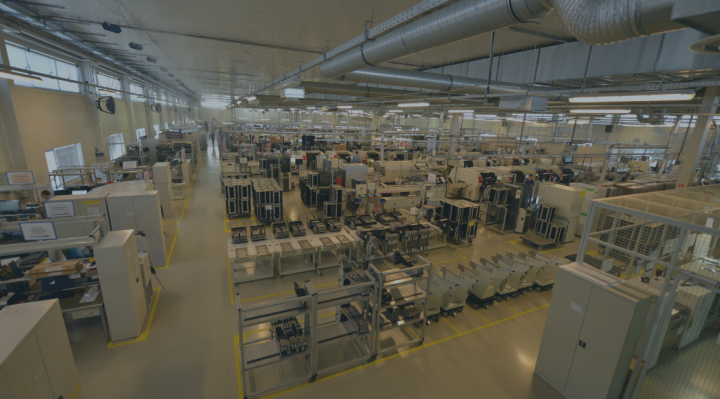SMT assembly: what is it?
The increasing pace of technological development and the ever-increasing user requirements force OEM manufacturers and EMS service providers to design and assemble more and more advanced and complex products. In practice, it translates into a need to miniaturise, i.e. reducing the size of individual components, such as transistors, capacitors or diodes, as well as using SMT technology (Surface Mount Technology) for mounting components on PCBs.
What is the SMT assembly?
Surface mount technology SMT involves placing and soldering electronic components directly onto the PCB surface, unlike the older THT technology (Through-Hole Technology), where the leads of the components were threaded through the PCB holes and soldered at the bottom.
SMT assembly is performed by state-of-the-art automated systems using precise measurement and vision solutions to set and solder the SMD (Surface Mount Device) components in the appropriate places on the printed circuit board.
Compared to the traditional THT technology, SMT assembly requires significantly less PCB space, allowing PCBs to be smaller, lighter and more energy efficient. For this reason, SMT assembly enables the production of more complex electronic devices of smaller sizes, which is especially important in the case of mobile products, such as smartphones, tablets or smartwatches.
The advantages of the surface mount technology:
At present, many OEM manufacturers and EMS service providers choose the surface mount technology as it ensures higher speed, efficiency and precision of the production process. However, the SMT assembly process allows the manufacturing of more durable, economical and energy-efficient products, which obviously translates into more satisfied customers and better financial results for the manufacturers.
The advantages of the SMT assembly that are responsible for the growing popularity of this technology are as follows:
■ High assembly density: SMT assembly makes it possible to pack more SMD components in a smaller area and to create more complex electronic circuits on a smaller and lighter PCB.
■ Better signal quality: components assembled using the SMT method are installed close to each other, which allows for a reduction in the length of connections and signal losses.
■ Smaller weight and size: SMD components are much smaller and lighter than THT components. A smaller and lighter PCB means a smaller size and weight of the final product.
■ Higher reliability: SMD components are more resistant to vibrations and shocks than THT components because they do not have terminals that may break or bend under vibrations or stress.
■ Ease of assembly: SMT assembly is easier than THT assembly since it does not require threading the leads of the components through the holes in the board. All components are soldered directly to the surface of the PCB, which significantly speeds up the process of assembly.
■ Higher level of automation and less susceptibility to assembly errors: SMT assembly does not require manual operations, which significantly reduces the risk of assembly errors. What is more, the automation of the production process allows SMT assembly lines to feed and assemble thousands of components per hour (which is impossible in the case of THT) and allows for more effective quality control, which directly translates into the reduction of production costs.
■ High performance: since SMD components are soldered directly on the PCB surface, the surface mount technology (SMT) allows the manufacturer to assemble more components in less time.
■ Lower cost: The SMT technology allows the manufacturer to reduce production costs thanks to automation and the use of fewer components.
■ Affordability: compared to the conventional THT technology, the SMT assembly is in most cases more affordable since SMD components are smaller and lighter, which not only reduces material consumption but also simplifies and expedites the manufacturing process. This allows the contracted EMS providers to reduce production costs and offer their customers more competitive prices.
The disadvantages of the surface mount technology
Despite the advantages, the SMT assembly also has some disadvantages: it requires specialised skills and expertise, as well as precise planning, taking into account the PCB design and the properties of the components to be installed on the PCB.
In the case of surface mount technology, some machinery capital expenditure is also required (see: Assel is investing in a new SMT printer) and appropriate programs for the machines. Errors in programming, when numerous parameters must be taken into account, like the operational conditions of the product, can lead to production delays, assembly errors and subsequent product defects, which may result in the need to carry out costly repairs or withdraw the product from the market.
Conclusion:
The SMT assembly is a method that is becoming more and more popular due to the ease of assembly, a higher level of automation and less susceptibility to assembly errors, as well as higher efficiency, affordability and the ability to produce more efficient, energy-saving and durable products.
However, surface mount technology requires appropriate machinery, professional expertise and experience. For this reason, it becomes important to choose an EMS service provider that would be able to not only precisely mount the SMD components on the PCB but also suggest their appropriate selection, and thus improve the quality and efficiency of the final product.







